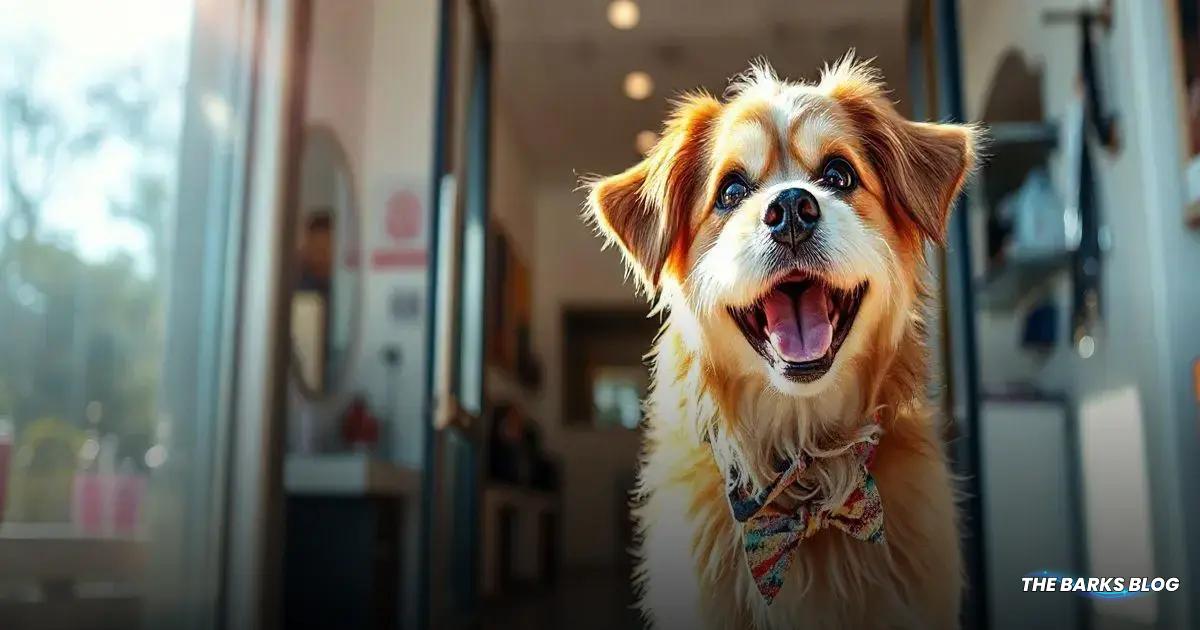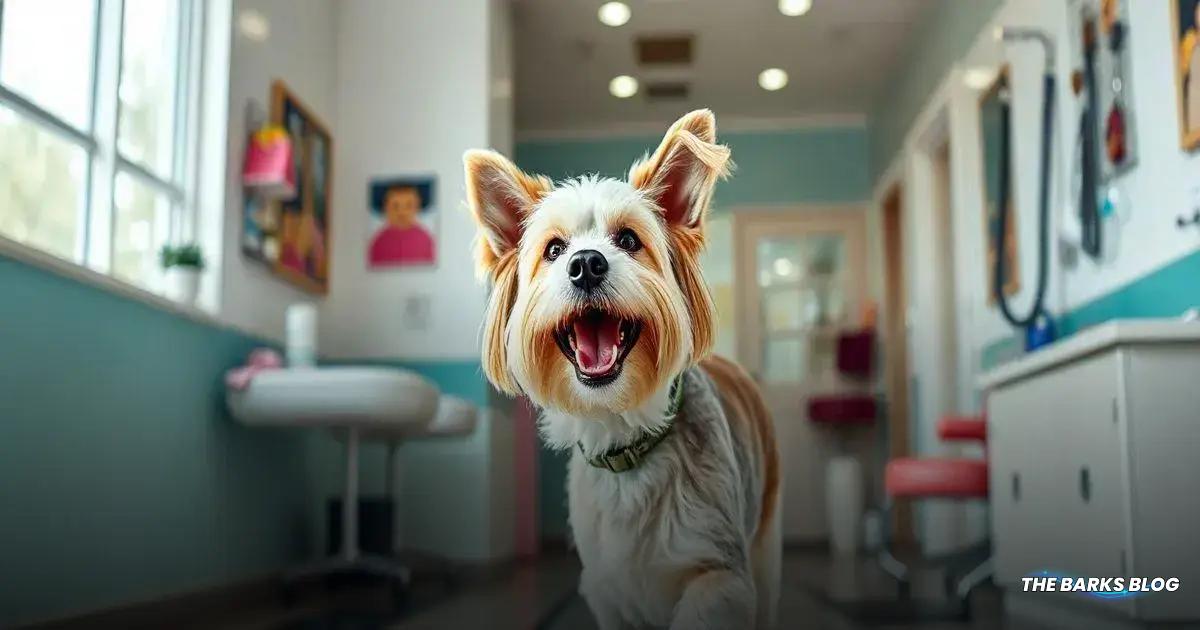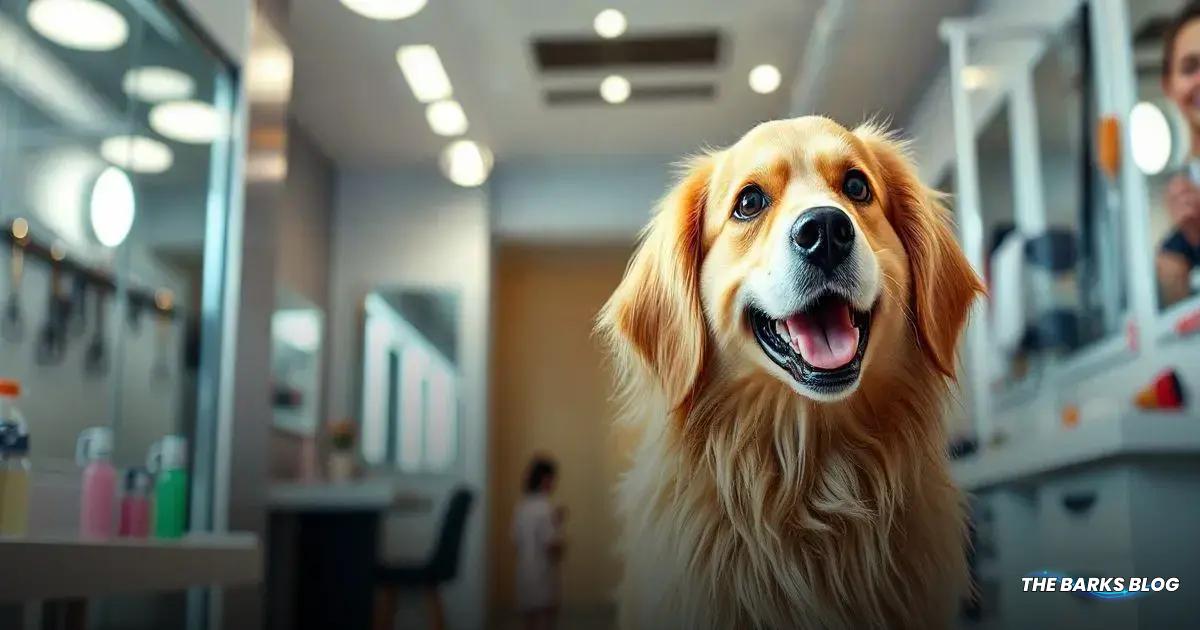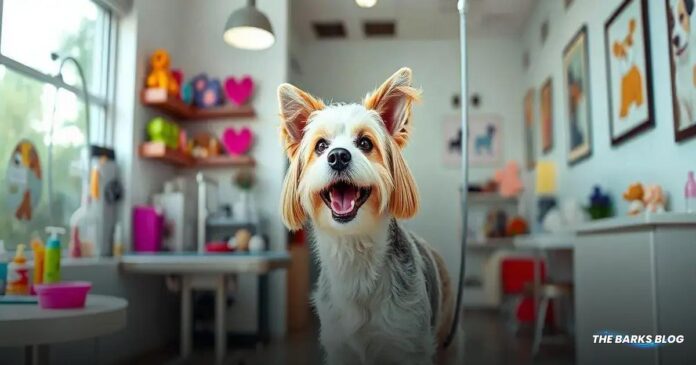Grooming is vital for your dog’s health and comfort, helping to prevent matting and skin issues while keeping them stylish. It’s important to understand your dog’s coat type and activity level when choosing a grooming style, whether you groom at home or seek professional services. Prioritizing your dog’s grooming needs ensures they remain happy and healthy.
One of the best feelings you can have is walking out of the salon with a fresh haircut. It’s almost like it gives you the confidence to take on the world.
I’m not sure that dogs feel the same way, but that doesn’t mean you shouldn’t take them for a trim every now and then. Keeping your dog well-groomed isn’t just about looking good — though, let’s be honest, who doesn’t love seeing their dog looking sharp? Regular grooming is essential for their health and comfort.

Why Grooming is Important for Dogs
Grooming is far from vanity. It serves to keep your dog healthy and comfortable. Here’s why it matters.
Hygiene and Health
Grooming your dog regularly will maintain their coat in the best possible health. That means no mats, no dirt, and fewer skin issues.
Keeping them free of matting is especially important, as matted fur can become a serious problem for some dogs. It can get painful and even lead to skin issues, and that’s a whole other universe of problems.
Brushing the fur from time to time prevents matting and helps the distribution of natural oils which keep the coat in tip-top shape.
Comfort and Mobility
Imagine having hair constantly in your eyes or getting tangled in your toes — pretty uncomfortable, right?
Well, that’s often the reality for dogs with long coats. The hair can irritate their eyes and their skin, which makes it uncomfortable for them to perform even the most basic activities.
Keeping these areas trimmed ensures your dog can see, walk, and play without being bothered by their fur. It also helps with cleanliness, particularly around their paws and private areas.
Style and Aesthetics
We all like looking good, and there’s no reason why we shouldn’t afford that possibility for our pets as well.
Health is, of course, the number one priority when it comes to dog grooming, but if you can also make your pup look fresh and ready for the runway, even better!

Understanding Dog Coat Types
Depending on your pup’s particular coat type, the approach you take to grooming will differ as different types of dog haircuts will depend on their breed and coat.
Here’s a quick breakdown of the most common dog coat types:
- Short coats: Think of boxers, pit bulls, or beagles. Their short, smooth coats are low-maintenance but still benefit from brushing to remove loose hair.
- Long coats: This includes breeds like shih tzus, Afghan hounds, and Yorkshire terriers. Regular brushing is a must in order to prevent matting and tangling.
- Curly coats: Poodles and bichon frises are great examples of dogs with curly coats. These dense coats require a lot of grooming and haircuts.
- Double coats: These are synonymous with golden retrievers and German shepherds. They shed a lot, so brushing is required — but no shaving!
- Wire coats: Many terriers have this coat, and it requires special grooming called hand-stripping, in which dead hair is removed by hand to maintain the coat’s texture.

Popular Dog Haircuts and Grooming Styles
1. Puppy Cut
This is one of those no-fuss cuts that involves trimming the hair to the same length—usually just a couple of inches—all over the dog’s body, making it easily manageable.
Its biggest benefit is that it is incredibly low-maintenance, so many dog owners will choose it, especially with sensitive breeds like poodles or shih tzus.
2. Teddy Bear Cut
This cut focuses more on looking good than on being easy to maintain. As the name suggests, the teddy bear dog haircut gives your pet a soft, rounded look reminiscent of a cuddly teddy bear.
Of course, not all breeds are appropriate for this type of dog haircut, but if you have a cockapoo, for example, you can make them look even more adorable.
But hey, if you think your Siberian husky would enjoy something like this, who are we to judge?
3. Lion Cut
The lion cut is a mane-like haircut perfect for dog breeds with long, flowing hair, such as Pomeranians or certain types of poodles.
From a practical standpoint, it involves shaving most of the body’s coat short and leaving a fluffy mane around the head and neck of the pup. It takes a lot of upkeep to maintain it, but if you want your pet to look like a mini lion, it’s definitely worth it.
4. Top Knot
This is one of those dog haircuts that are relatively rare, but you definitely take notice of them if you see them on the street.
While catching looks of admiration is a great bonus, the actual purpose of this trim is a little more practical. Breeds like Lhasa apsos have incredibly long and straight hair, and it can often be a nuisance for them.
It gets in their eyes, nose, and mouth, so they can’t move around freely. Tying a cute little ponytail at the top of their head solves this problem without having to shave them all the time.
5. Kennel Cut
This follows a similar inspiration to the previous dog haircut, as its main purpose is to provide the dog with enough freedom and mobility to play around without having to worry about their hair getting in the way.
The kennel cut involves shaving the body’s hair very short but leaving it a bit longer on the head and the tail.
It’s a no-fuss look that keeps your dog clean and works great for any active breed of dog with a medium-to-long coat.
6. Schnauzer Cut
The schnauzer dog haircuts are pretty self-explanatory, as it’s inextricably tied to one particular breed. However, the schnauzer look is so iconic that we simply had to mention it here.
It involves clipping the bulk of the coat to a relatively short length but leaving some extra length in the eyebrows and the beard. It’s meant to enhance the breed’s natural facial features, but it almost makes them seem more human-like, right?
7. Continental Clip
If you’ve ever seen a show Poodle, you’ve probably seen the continental clip. This is a more complex, traditional style that involves shaving parts of the body while leaving “pom-poms” of fur on the legs, tail, and head.
It’s an absolute fashion statement, and you can bet that it involves a ton of maintenance, but that’s why it’s mostly reserved for show dogs. Most of the time, it’s poodles, but there are occasional examples of other breeds rocking it, as well.
8. Lamb Cut
The lamb dog haircuts are popular for curly-coated breeds like poodles and bichon frises. It keeps the hair on the legs slightly longer and fluffier while the rest of the body is trimmed short and even.
The result is an irresistible little lamb-like appearance, especially if your dog has pearly white fur.
9. Neaten
The neaten cut is perfect for dogs who don’t need a full-on haircut but could use a little tidying up.
It involves subtle trimming and cleaning up the edges, mostly around the face, paws, and private parts. It keeps the dog looking clean and well-groomed without going for a drastic change.
Essentially, it’s the equivalent of a guy going to the salon every two weeks and nodding in confirmation when the barber asks him: “The usual?”
10. Shaved
This one probably doesn’t need much explaining, but we’re going to do it anyway. Shaving your dog’s coat completely might seem a tad drastic, but there are many factors to consider.
Let’s take somebody who lives in a warmer climate as an example. There are dog breeds who won’t be able to cope with hundred-degree heat buried under a full-length coat, so shaving them — or at least trimming them down to an inch or two — makes a lot of sense.
The same can be said for dog breeds who tend to shed a lot. Shaving them streamlines the process and has the added bonus of keeping your home much cleaner.
However, you should be careful when shaving dogs with double coats because it might disrupt their natural insulation or their oil distribution. In any case, it’s always best to consult a professional before you grab a pair of shears.

At-Home Grooming vs. Professional Grooming
Thinking of grabbing a pair of shears yourself? It’s time to talk about DIY vs. going to a pro.
At-home grooming is good enough for handling essentials like regular brushing, trimming nails, and cleaning ears. This is your typical day-to-day or week-to-week stuff that you can easily do as part of your bonding routines.
However, certain grooming needs are best left to the professionals. There are more complex tasks that require experience and precision that you simply can’t accomplish in your backyard.
This includes things like de-matting, coat maintenance, and getting the schnauzer cut just right.
Whichever cut you end up choosing for your pup, it’s important to remember that regular grooming and the right haircut are essential to keeping them healthy, comfortable, and looking their best.

Tips for Choosing the Right Grooming Style
Choosing the right grooming style for your dog can be a bit overwhelming, especially with so many options available. Here are some helpful tips to guide you in making the best choice:
1. Consider Your Dog’s Coat Type
Understanding your dog’s specific coat type is crucial. Short-haired breeds may require less maintenance, while long-haired or curly-coated breeds will need regular grooming to prevent matting and tangling.
2. Think About Your Dog’s Lifestyle
Your dog’s activity level and lifestyle should influence your grooming choice. Active dogs who love to play outdoors may benefit from shorter cuts that are easier to manage, while more laid-back pups might enjoy longer styles that require less frequent grooming.
3. Consult with a Professional Groomer
If you’re unsure about which style suits your dog best, don’t hesitate to consult a professional groomer. They can provide valuable insights based on your dog’s breed, coat type, and personality.
4. Keep Your Dog’s Comfort in Mind
Always prioritize your dog’s comfort. Some cuts may look great but could irritate your dog or restrict their movement. Ensure that the grooming style you choose allows your dog to move freely and comfortably.
5. Consider Maintenance Requirements
Different grooming styles come with varying maintenance needs. If you prefer a low-maintenance option, opt for cuts that require less frequent grooming. On the other hand, if you’re willing to invest time in grooming, you can choose more elaborate styles.
By considering these factors, you can choose a grooming style that not only looks great but also keeps your dog happy and healthy!
Conclusion
Grooming is an essential part of keeping your dog healthy, comfortable, and looking their best.
Whether you opt for an at-home grooming routine or choose to visit a professional, understanding your dog’s coat type and lifestyle will help you select the perfect grooming style.
From the practical benefits of regular grooming to the stylish cuts that can make your pup stand out, every choice you make contributes to their overall well-being.
Remember to prioritize your dog’s comfort and consult with professionals when needed.
Happy grooming!
FAQ – Frequently Asked Questions about Dog Grooming
How often should I groom my dog?
The frequency of grooming depends on your dog’s coat type and lifestyle. Generally, long-haired breeds may need grooming every few weeks, while short-haired breeds can often be groomed less frequently.
Can I groom my dog at home?
Yes, many grooming tasks can be done at home, such as brushing, nail trimming, and ear cleaning. However, more complex grooming needs may require a professional.
What is the best grooming style for my dog?
The best grooming style depends on your dog’s coat type, lifestyle, and comfort. Consulting with a professional groomer can help you make the best choice.
What are the benefits of professional grooming?
Professional groomers have the experience and tools to handle complex grooming tasks, such as de-matting and specific breed cuts, ensuring your dog looks and feels their best.
How can I prevent matting in my dog’s coat?
Regular brushing is key to preventing matting. For long-haired breeds, daily brushing is ideal, while shorter-haired breeds may require less frequent grooming.
Are there any grooming styles that are better for summer?
Yes, shorter cuts can help keep dogs cool during the summer months. Always consider your dog’s comfort and coat type when choosing a summer grooming style.




